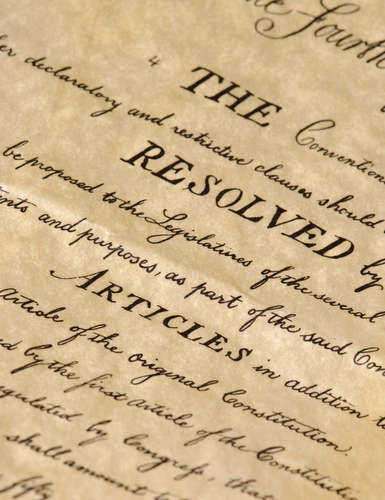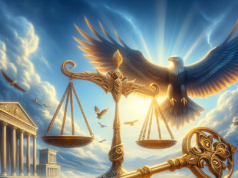Table of Contents

Article 2 of the United States Constitution: The Powers of the Executive Branch
The United States Constitution, often regarded as the supreme law of the land, is the foundational document that established the framework for the federal government and the principles upon which the nation is built. Article 2 of the Constitution is a crucial component of this framework, outlining the powers and responsibilities of the executive branch of the U.S. government. In this comprehensive article, we will explore the origins, significance, and key provisions of Article 2, as well as its historical context and contemporary relevance.
Origins and Historical Context
The United States Constitution was drafted during the Constitutional Convention in Philadelphia in 1787 and ratified by the states in 1788. Article 2 emerged as a result of the framers’ desire to establish a strong executive branch while avoiding the tyranny they had experienced under British rule. The framers sought to strike a delicate balance between a powerful executive and a system of checks and balances to prevent the abuse of power.
The historical context of Article 2 was shaped by the weaknesses of the Articles of Confederation, the first attempt at national governance in the United States. The Articles of Confederation had created a weak central government, which lacked the ability to levy taxes, raise an army, or regulate trade effectively. The framers of the Constitution recognized the need for a more robust executive branch to address these deficiencies.
Structure and Key Provisions
Article 2 of the Constitution is divided into four sections, each of which addresses different aspects of the executive branch’s powers and responsibilities:
- Section 1: The Executive Power
Section 1 vests the executive power of the United States in the office of the President. It establishes the presidency as a single office and outlines the term of office, qualifications for the presidency, and the process for electing the President and Vice President. The President’s term is set at four years, and candidates must be natural-born citizens of the United States and at least 35 years old.
- Section 2: Presidential Powers and Responsibilities
Section 2 enumerates the specific powers and responsibilities of the President. It grants the President authority over the military as Commander-in-Chief, the ability to make treaties (with the Senate’s advice and consent), the power to nominate federal judges and other officials, and the responsibility to deliver the State of the Union address. This section also outlines the process of impeachment for the President, allowing for removal from office in cases of “high crimes and misdemeanors.”
- Section 3: Presidential Duties
Section 3 defines the President’s domestic and foreign policy roles. It requires the President to periodically report to Congress on the state of the union, recommend legislation, and convene both houses of Congress on “extraordinary occasions.” This section also provides for the President to receive foreign ambassadors and execute the laws passed by Congress.
- Section 4: Impeachment
Section 4 establishes the process for impeaching and removing the President, as well as other civil officers of the United States. It states that the President and other officers can be impeached for treason, bribery, or “other high crimes and misdemeanors.” The House of Representatives has the power to impeach, and the Senate conducts the trial, with a two-thirds majority required for removal from office.
Significance and Interpretation
Article 2 is of great significance because it defines the executive branch’s scope and authority, setting forth the parameters within which the President operates. It also plays a pivotal role in the system of checks and balances, ensuring that the executive branch does not become too powerful. The framers intended for the presidency to be a coequal branch of government, alongside the legislative and judicial branches, and Article 2 embodies that vision.
Over the years, Article 2 has been subject to interpretation and debate, leading to significant legal and political developments. Some key points of contention and interpretation include:
- Executive Orders: Article 2 does not explicitly mention executive orders, but they have become an important tool for Presidents to implement and enforce policies. The scope and limits of executive orders have been a subject of debate, with legal challenges arising when they are seen as overstepping the President’s authority.
- War Powers: The Constitution grants the President the power to serve as Commander-in-Chief, but the authority to declare war is vested in Congress. The interpretation of these provisions has been a source of tension between the executive and legislative branches, particularly in recent conflicts.
- Executive Privilege: The concept of executive privilege, the President’s ability to withhold certain information from Congress and the public, has been the subject of legal battles and debates about transparency and accountability.
- Impeachment: Article 2’s provisions on impeachment have been invoked on multiple occasions in American history, most notably during the impeachment trials of Presidents Andrew Johnson, Richard Nixon, and Bill Clinton. Each case raised questions about what constitutes “high crimes and misdemeanors.”
Contemporary Relevance
Article 2 remains highly relevant in the modern era, as it continues to shape the presidency and the broader U.S. government. Recent events and debates have highlighted its enduring significance:
- Presidential Elections: Article 2’s provisions regarding presidential elections continue to guide the democratic process. Issues related to the Electoral College, campaign finance, and voter eligibility are frequently discussed in the context of presidential elections.
- Presidential Powers: Each new presidency brings debates about the extent of executive authority, especially concerning executive orders, national emergencies, and foreign policy decisions. These debates often raise questions about the balance of power between the branches of government.
- Impeachment: The impeachment process outlined in Article 2 has been invoked more frequently in recent years, underscoring its ongoing relevance in addressing allegations of presidential misconduct.
- National Security: The President’s role as Commander-in-Chief remains a crucial aspect of Article 2. Decisions related to military engagement, national security, and international diplomacy continue to be shaped by the framework established in the Constitution.
In conclusion, Article 2 of the United States Constitution is a foundational document that outlines the powers and responsibilities of the executive branch of the U.S. government. Its historical origins, structure, and key provisions continue to influence the operation of the presidency and the broader system of checks and balances in the United States. As the nation evolves, Article 2 remains a central and enduring component of American governance, shaping the presidency and the nation’s political landscape.
Introduction
The Constitution of the United States is a cornerstone of the nation’s governance, outlining the powers and responsibilities of the federal government and its branches. Article 2 of the Constitution, in particular, is dedicated to the Executive Branch and the presidency. However, the states, while operating under the framework of the federal Constitution, also have their own legal systems. This article delves into how Article 2 of the US Constitution is reflected in all the US states.
Article 2 of the Constitution: An Overview
Article 2 vests the executive power of the United States in the President, outlines the method of presidential election through the Electoral College, sets the President’s term to four years, and establishes the President’s role as Commander in Chief of the armed forces. It also empowers the President to grant pardons, make treaties (with Senate approval), and nominate various officials, among other duties.
State Laws in Line with Article 2
While state laws primarily concern themselves with issues not explicitly outlined in the federal Constitution, some aspects of Article 2 have implications at the state level. Let’s explore how these seven diverse states incorporate Article 2 principles within their own legal frameworks:
Alabama: Embracing Executive Authority
Alabama’s state laws and constitution align with Article 2 of the federal Constitution in matters such as executive power and the role of the Governor. The Governor’s role in law enforcement and the deployment of the National Guard during emergencies mirrors the Commander in Chief role. Additionally, the Alabama Constitution empowers the Governor to grant pardons and reprieves.
Alaska: A Reflection of Presidential Authority
Alaska’s Constitution mirrors Article 2 in many ways. The Governor of Alaska serves as the state’s chief executive, with powers analogous to those of the President on a federal level. This includes the authority to make appointments, issue proclamations, and, in certain situations, exercise clemency powers.
Arizona: Executive Powers Aligned
Arizona’s Constitution establishes the Governor as the state’s chief executive, with responsibilities that parallel those of the President. The Governor has authority over the state’s National Guard and may issue pardons or commute sentences, drawing a clear connection to Article 2.
Arkansas: Echoes of Article 2
The Arkansas Constitution designates the Governor as the state’s executive leader. Similar to Article 2, the Governor has authority over the state’s military forces and can grant reprieves and pardons.
California: Fusion of State and Article 2 Principles
While the California Constitution provides for a Governor with powers analogous to those of the President, it also emphasizes direct democracy through initiatives and referenda, which in some ways echo the popular participation inherent in the Electoral College process outlined in Article 2.
Colorado: A Governor’s Authority
The Colorado Constitution establishes the Governor’s office as the state’s chief executive, with responsibilities mirroring those of the President. Like Article 2, the Governor has authority over the state’s militia and can grant pardons and commutations.
Connecticut: Reflection of Presidential Responsibilities
The Governor of Connecticut operates as the state’s chief executive and holds comparable powers to the President. Connecticut’s Governor serves as Commander in Chief of the state’s National Guard and exercises clemency powers, similar to those granted to the President in Article 2.
Delaware: Article 2 in Action
Delaware’s Constitution empowers the Governor with executive authority similar to that of the President. The Governor can exercise pardoning powers and is designated as the Commander in Chief of the state’s military forces.
Florida: Presidential Elections and Term Limits
In Florida, the presidential election process follows the federal model, utilizing the Electoral College to translate citizens’ votes into electors. The state’s commitment to a fair and democratic election process mirrors the Constitution’s intent to balance state interests and popular will. Furthermore, Florida imposes no additional term limits beyond the Constitution’s prescribed four-year term for the President. This decision underscores the state’s respect for federal principles and the importance of continuity in leadership.
Georgia: Faithful Execution and Commander in Chief
Georgia, much like the rest of the nation, emphasizes the principle of faithful execution as laid out in Article 2, Section 1. This commitment ensures that the President carries out their duties responsibly and with allegiance to the Constitution. Additionally, Georgia aligns with the Constitution’s mandate, designating the President as the Commander in Chief of the state’s National Guard units. This recognition reinforces the importance of civilian control over the military, as envisioned by the framers.
Hawaii: Diplomatic Power and Treaty Negotiations
Hawaii’s alignment with Article 2 extends to the diplomatic power vested in the President. As a state with a diverse and vibrant international presence, Hawaii’s recognition of the President as the nation’s primary representative in foreign affairs mirrors the federal intent. Moreover, when it comes to treaty negotiations, Hawaii acknowledges the state’s shared responsibility with the President. This mirrors the Constitution’s requirement of Senate approval for treaties, reflecting a balance between federal and state authority.
Idaho: Presidential Pardoning Power and State Justice
Idaho’s legal landscape aligns with Article 2’s provision for presidential pardoning power. The state’s acknowledgement of the President’s authority to grant pardons or reprieves for federal offenses emphasizes the importance of clemency within the criminal justice system. Furthermore, this recognition reflects the federal-state partnership in upholding justice, wherein the President’s authority complements state-level efforts to ensure fairness and equity.
Illinois: Appointments and Recess Appointments
Illinois adheres to the Constitution’s framework of executive appointments. The state’s recognition of the President’s authority to nominate federal officials and judges with the “advice and consent” of the Senate mirrors the federal process. Additionally, Illinois acknowledges the concept of recess appointments, showcasing its commitment to ensuring a functional government even during temporary disruptions.
Indiana: Treaty Power and State Diplomacy
In Indiana, the Constitution’s principles are mirrored in the recognition of the President’s treaty power and the federal-state partnership in diplomacy. Indiana acknowledges the President as the primary negotiator of international agreements, consistent with Article 2’s mandate. Furthermore, the state underscores the significance of maintaining its own diplomatic ties with foreign entities while adhering to the federal framework.
Iowa: Role of Commander in Chief and State National Guard
Iowa’s alignment with Article 2 manifests in its recognition of the President as the Commander in Chief of the state’s National Guard units. This acknowledgement underscores the state’s commitment to federalism, ensuring a unified approach to military matters while upholding civilian control over the armed forces. Iowa’s compliance with the federal model reflects the framers’ intent to strike a balance between state sovereignty and national unity.
Kansas: The Executive Power and Shared Governance
Kansas, like other states, aligns with Article 2 in recognizing the President as the embodiment of the executive power. This principle emphasizes the importance of a strong executive branch to execute laws effectively. Additionally, Kansas acknowledges its shared role in the federal system, supporting the President’s efforts while maintaining its own state-level governance.
Kentucky: Executive Powers Aligned
Kentucky, like other states, adheres to the principles set forth in Article 2, which vests the executive power in the President. The state’s laws mirror this by establishing an executive branch headed by the Governor, who exercises powers analogous to those of the President. The Governor’s authority includes command over the state’s National Guard and the power to issue pardons and reprieves, mirroring the President’s powers outlined in Article 2.
Louisiana: Reflecting Presidential Authority
In Louisiana, the Constitution sets forth the powers of the Governor, analogous to those of the President. The Governor’s authority extends to commanding the state’s militia, negotiating treaties with Native American tribes, and granting reprieves and pardons. This reflects the spirit of Article 2, emphasizing the balance between executive power and checks and balances.
Maine: Executive Authority and State Governance
Maine’s laws, in line with Article 2, establish a Governor who holds executive authority. The Governor is responsible for enforcing state laws and overseeing the National Guard, akin to the President’s role as Commander in Chief. Additionally, the Maine Constitution grants the Governor the power to grant reprieves, commutations, and pardons, reflecting the President’s power under Article 2.
Maryland: Reflecting Article 2’s Principles
Maryland’s laws parallel Article 2 by creating an executive branch led by the Governor. The Governor holds authority over the state’s military forces and can grant pardons, reflecting the President’s powers. Maryland’s executive structure emphasizes the importance of a balanced division of power, mirroring the framers’ intent behind Article 2.
Massachusetts: Executive Powers and Balance
The state of Massachusetts adheres to Article 2’s spirit by establishing an executive branch led by the Governor. The Governor’s powers encompass commanding the state’s militia, granting pardons, and negotiating interstate agreements. Massachusetts, like the federal government, emphasizes the importance of effective governance through a balanced distribution of powers.
Michigan: Executing State Laws
Michigan, in line with Article 2, designates an executive branch headed by the Governor. The Governor holds the power to grant reprieves, commutations, and pardons, mirroring the President’s power. Michigan’s adherence to principles of executive authority, with checks and balances, underscores the Constitution’s influence on state governance.
Minnesota: Reflecting Executive Authority
Minnesota’s state laws follow the spirit of Article 2 by establishing a Governor with executive powers. The Governor holds authority over the state’s military forces, analogous to the President’s role as Commander in Chief. The Governor’s power to grant reprieves and pardons is another reflection of the President’s power outlined in Article 2.
Mississippi: Embodying Executive Power
Mississippi’s state laws echo Article 2 by creating an executive branch led by the Governor. The Governor holds authority over the state’s militia and can grant reprieves and pardons. This arrangement emphasizes a balance between executive authority and the necessity of checks and balances, mirroring the principles set forth in the Constitution.
Missouri: Presidential Electors and the Popular Vote
In Missouri, the implementation of Article 2’s provisions is evident in its approach to presidential elections. Like other states, Missouri utilizes the Electoral College system to select its presidential electors. The interaction between Article 2’s Electoral College mechanism and state laws underscores the balance sought by the framers between federal and state interests. Missouri’s state laws determine how these electors are chosen and pledged to cast their votes, ultimately shaping the voice of the state in the election of the President.
Montana: Presidential Pardons and State Criminal Law
Montana’s legal landscape offers an intriguing intersection between Article 2’s presidential powers and state criminal law. Article 2 grants the President the power to grant pardons for federal offenses. However, Montana state law governs the handling of state-level criminal matters. In cases where individuals may seek clemency or pardons for state crimes, the interplay between Article 2 and Montana’s legal framework emphasizes the dual sovereignty of the federal and state governments.
Nebraska: Presidential Appointments and State Influence
Article 2’s provisions on presidential appointments interact with Nebraska’s state laws when it comes to the selection of individuals for key positions within the federal government. While Article 2 mandates that the President, with Senate approval, makes such appointments, Nebraska’s state laws indirectly influence this process by determining the state’s representatives in the Senate. This highlights the interdependence of federal and state systems in shaping the nation’s leadership.
Nevada: Executive Authority and the National Guard
Nevada’s state laws play a significant role in the implementation of Article 2’s provision designating the President as the Commander in Chief of the United States Armed Forces. While the President has the authority to command the national military, state governors retain control over their respective National Guard units. Nevada’s state laws regarding the deployment and management of the National Guard showcase the delicate balance between federal executive power and state autonomy.
New Hampshire: Treaty Negotiations and State Interests
Article 2’s authorization for the President to negotiate treaties with foreign nations highlights the intersection of federal foreign policy and state interests. New Hampshire, like other states, navigates this dynamic by
accommodating federal treaty negotiations while ensuring that state-level interests are considered. The state’s engagement in international trade, business relationships, and diplomatic endeavors demonstrates how the federal government’s actions under Article 2 can impact state economic and diplomatic activities.
New Jersey: Presidential Oath and State Officials
Article 2’s requirement for the President to take a solemn oath before assuming office echoes in New Jersey’s state laws regarding oaths of office for state officials. The state’s commitment to upholding constitutional values aligns with the President’s responsibility to faithfully execute the office. New Jersey’s legal practices reflect a broader commitment to the principles outlined in Article 2, reinforcing the constitutional ideals that underpin the nation’s governance.
New Mexico: Presidential Pardons and State Criminal Justice
New Mexico’s state laws related to criminal justice intersect with Article 2’s provision for presidential pardons. While the President’s power to grant pardons is directed at federal offenses, the impact on state matters remains relevant. The interaction between federal pardoning power and New Mexico’s state criminal justice system underscores the complexity of administering justice at both levels of government.
New York: Presidential Appointments and Senate Confirmation
New York’s state laws, particularly those related to the selection of Senators, influence the implementation of Article 2’s provision for presidential appointments with Senate approval. The President’s appointments of federal officials, subject to the Senate’s “advice and consent,” reflect the framers’ intent to incorporate checks and balances into the system. New York’s role in shaping the Senate’s composition demonstrates the interplay between federal and state dynamics in the appointment process.
North Carolina: Reflecting Executive Authority
In North Carolina, the state constitution mirrors the federal constitution’s separation of powers principle, with Article 3 establishing the executive branch. The governor of North Carolina serves as the chief executive, executing state laws and representing the state in various capacities. The state’s laws grant the governor powers such as appointing and removing officials, exercising the veto, and commanding the state’s military forces.
North Dakota: Embracing Executive Responsibility
In North Dakota, the state’s constitution similarly outlines the structure of the executive branch in Article 5. The governor, as the head of this branch, holds responsibilities including implementing state laws, convening the legislature, and appointing officials. The governor’s role in North Dakota is reflective of Article 2’s principles, as they are entrusted with the execution of state laws and the management of the state’s executive functions.
Ohio: Reflecting Presidential Powers
Article 3 of the Ohio Constitution establishes the executive branch, led by the governor. The governor of Ohio is vested with powers analogous to those outlined in Article 2 of the federal Constitution. These powers include the authority to grant reprieves, commute sentences, and remove public officials from office. The Ohio governor’s role is a manifestation of the framers’ vision of a strong but checked executive authority.
Oklahoma: Embodying Executive Authority
In Oklahoma, the executive power is vested in the governor as defined in Article 6 of the state’s constitution. The governor’s role aligns with Article 2’s principles, involving the execution of state laws and the administration of the state’s executive functions. The governor’s ability to make appointments, grant pardons, and veto legislation echoes the broader principles enshrined in Article 2.
Oregon: Reflecting the Governor’s Role
Oregon’s state constitution, Article 5, establishes the executive department, with the governor at its helm. The governor’s role in Oregon reflects the essence of Article 2, as they oversee the enforcement of state laws and play a significant role in the state’s legislative process. Their powers, including the authority to grant reprieves and veto legislation, demonstrate the nuanced blend of executive authority and checks and balances.
Pennsylvania: Embodying Executive Authority
Pennsylvania’s state constitution, Article 4, sets forth the executive department, with the governor as the chief executive officer. Drawing inspiration from Article 2, the Pennsylvania governor is responsible for executing state laws and ensuring the well-being of the state. Their powers include the ability to grant pardons, make appointments, and enforce state laws, mirroring the broader framework established by Article 2.
Rhode Island: The Governor’s Role
Article 9 of Rhode Island’s state constitution outlines the executive branch, led by the governor. While reflecting the principles of Article 2, the governor’s role in Rhode Island involves upholding and executing state laws, making appointments, and ensuring the state’s welfare. The governor’s powers to grant pardons and enforce the laws resonate with the foundational ideas of the federal Constitution.
South Carolina: Reflecting Executive Authority
In South Carolina, the executive branch is established by Article 4 of the state constitution. The governor serves as the chief executive officer, tasked with executing state laws and representing the state. The governor’s powers to grant pardons, make appointments, and enforce state laws align with the core tenets of Article 2, emphasizing the importance of effective and accountable executive governance.
South Dakota: Balancing Legislative Oversight
In South Dakota, state laws emphasize a harmonious balance between the governor’s executive powers and legislative oversight. While the governor is vested with executive authority similar to that outlined in Article 2, state laws ensure that the legislature maintains its crucial role in the checks and balances system. The South Dakota Constitution delineates the governor’s authority in areas such as appointments, budgetary matters, and the command of the state’s National Guard.
Tennessee: Granting Limited Veto Power
Article 3 of Tennessee’s state constitution establishes the executive department, headed by the governor. The governor’s powers align with those in Article 2, encompassing the execution of state laws and the exercise of executive functions. Notably, Tennessee’s governor holds a limited veto power over legislation, allowing for a form of executive oversight consistent with the broader principles of the federal Constitution.
Texas: Reflecting Presidential Powers
Texas, in accordance with its state constitution, Article 4, designates the governor as the chief executive officer responsible for executing state laws and maintaining the state’s well-being. The governor’s role reflects the principles outlined in Article 2, encompassing powers such as making appointments, issuing pardons, and ensuring the proper functioning of the state’s executive branch.
Utah: Embracing Executive Authority
In Utah, the state constitution’s Article 7 establishes the executive department, with the governor serving as its head. The governor’s role is reflective of Article 2’s principles, involving the enforcement of state laws, the administration of state government, and the representation of the state. The governor’s powers to grant pardons, make appointments, and enforce laws underscore the importance of effective and accountable executive leadership.
Vermont: Balancing Power and Checks
Article 4 of Vermont’s state constitution sets forth the executive branch, with the governor at its helm. The governor’s role reflects the principles enshrined in Article 2, involving the execution of state laws, the administration of government functions, and the representation of the state. Vermont’s constitution ensures checks and balances by requiring gubernatorial appointments to be subject to legislative approval, aligning with broader principles of federalism.
Virginia: Reflecting Executive Authority
Virginia’s state constitution, Article 5, outlines the executive branch, led by the governor. The governor’s powers and responsibilities resonate with those outlined in Article 2, including the enforcement of state laws, the execution of executive functions, and the representation of the state. The governor’s authority to grant pardons, make appointments, and enforce laws emphasizes the balance of power within the state’s governance structure.
Washington: Embodying Executive Authority
Washington’s state constitution, Article 3, establishes the executive branch, headed by the governor. The governor’s role aligns with Article 2’s principles, involving the execution of state laws, the administration of executive functions, and the representation of the state. The governor’s powers to grant pardons, make appointments, and enforce laws underscore the importance of accountable and effective executive governance.
West Virginia: Reflecting Presidential Powers
In West Virginia, the state constitution, Article 7, outlines the executive branch, led by the governor. The governor’s powers align with those outlined in Article 2, encompassing the execution of state laws, the administration of executive functions, and the representation of the state. The governor’s authority to grant pardons, make appointments, and enforce laws reinforces the principles of effective and responsible executive leadership.
Wisconsin: Embracing Executive Authority
Wisconsin’s state constitution, Article 5, establishes the executive branch, with the governor as its head. The governor’s role is consistent with the principles of Article 2, involving the enforcement of state laws, the administration of executive functions, and the representation of the state. The governor’s powers to grant pardons, make appointments, and enforce laws underscore the significance of accountable and effective executive governance.
Wyoming: Reflecting Presidential Authority
Wyoming’s state constitution, Article 4, outlines the executive department, led by the governor. The governor’s role reflects the principles of Article 2, involving the enforcement of state laws, the administration of executive functions, and the representation of the state. The governor’s authority to grant pardons, make appointments, and enforce laws underscores the importance of responsible and effective executive leadership.
Conclusion
Across the diverse landscape of the United States, state laws and constitutions align with the principles of Article 2 of the federal Constitution in various ways. Whether through the establishment of executive branches, recognition of gubernatorial powers, or adherence to principles of checks and balances, the states reflect the overarching values of the nation’s founding document. As each state navigates the interplay between federal and state authority, the enduring influence of Article 2 continues to shape the fabric of American governance at all levels.
What is Article 2 of the Constitution?
Article 2 of the United States Constitution is the section that makes the executive branch of the government. The Executive branch of the government is the branch that has the responsibility and authority for the administration throughout the day of the state. In the United States, the executive branch includes the President and other executive officers like state governors.
How is Article 2 Broken Down?
Article 2 of the United States Constitution is broken down into four main sections. These sections are further broken down even more into clauses.
Section 1 of Article 2 of the Constitution
Section 1 has 8 different clauses that all describe the rights and role of the President and Vice President of the country.
Clause 1: This is the vesting clause which says that the President of the United States has the executive power and will hold his or her office for a four-year term along with a vice president for the same term.
Clause 2: Both the president and the vice president are chosen by the electors, who are usually picked by the state legislatures. Each state can choose as many electors as it has senators and representatives for that state.
Clause 3: Once the electors are chosen, they will meet in their state to vote on who shall be President and Vice President. Originally, the person with the most votes would become President while the second-highest would become Vice President. However, after the passing of the 12th Amendment, Electors would vote once for a President and once for a Vice President.
Clause 4: Congress has the power to decide when Election Day will be held. Currently, the states choose their electors on the Tuesday after November’s first Monday. The electors then vote on the second Wednesday of December.
Clause 5: In order for an individual to be qualified to be President or Vice President, he or she must be a natural-born citizen, at least 35 years old, and must have lived in the United Starts for 14 years.
Clause 6: If the President resigns, dies, is removed from office, or is not able to act out his duties, the Vice President will be responsible for replacing the President. If the Vice President is unable to continue his office, Congress must choose a suitable offer to replace him or her until the next election.
Clause 7: The President’s salary cannot change during his term. He also cannot get money from any other state or federal government.
Clause 8: The President must take an oath before entering his office
Section 2 of Article 2 of the Constitution
Section 2 has three different clauses that talk about the powers given to the President.
Clause 1: The President of the United States is the commander-in-chief of the military. This clause also creates a Cabinet of senior executive officers who assist the President in his duties.
Clause 2: This clause is called the Advice and Consent clause, which means that the President can use his powers only by getting help and approval of the United States Congress.
Clause 3: The President has the power to appoint officers during recesses of the court, but these appointments expire once the next session of the Senate begins.
Section 3 of Article 2 of the Constitution
Section 3 has five different clauses that talk about the responsibilities of the President.
Clause 1: The President has to give Congress information occasionally through a State of the Union address.
Clause 2: The President can call for sessions of the House of Representatives, the Senate, or both.
Clause 3: The President will receive all foreign ambassadors.
Clause 4: The President must work to ensure that all laws are faithfully executed.
Clause 5: The President has the power to commission the officers of the United States, including those in the military or the foreign service.
Section 4 of Article 2 of the Constitution
Section 4 is the last section of Article 2. This section talks about the impeachment of the President, Vice President, or any civil officers like Cabinet Secretaries or judges.






















